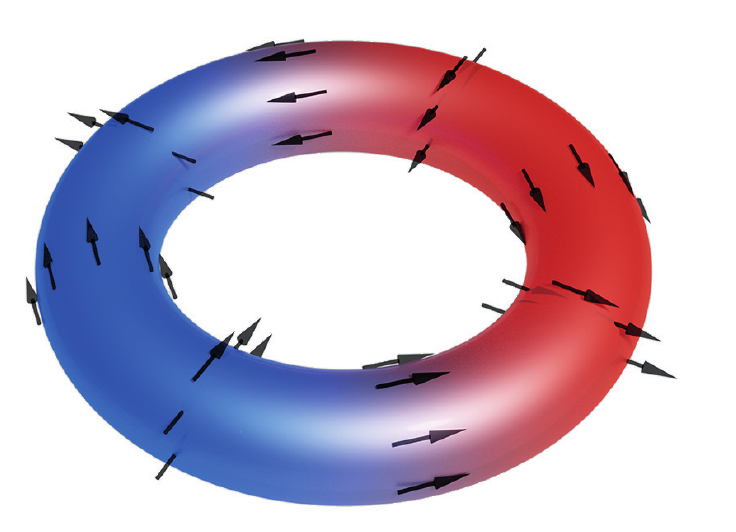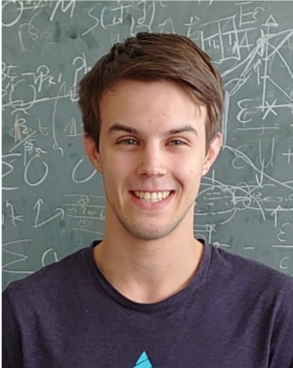Experiment and Theory working together to find a donut //

Hey, my name is Thomas and right now I am a PhD student in the group of Prof. Achim Rosch at the University of Cologne. When I did my bachelor studies, I thought that experimental physics and theoretical physics were two completely separated fields which have nothing in common. My perception was that once you specialize in one of the two during your master studies (for me this was theoretical physics) you never hear about the other again. The truth couldn’t be further from that perception.
In my PhD I investigate exotic transport properties of different systems, i.e., how novel materials conduct heat or electricity. For these projects we work closely with the experimental groups at the II. Physics Institute in Cologne.
A piece of solid contains a very large number of about 10^23 electrons per cubic centimeter (Yes, that is a 1 with 23 zeros following it). But at low temperatures (meaning a few degrees above −273,15 °C) only a small fraction of these electrons will be responsible for the electrical transport. They make up the so-called Fermi surface which gives us information about the behavior of the electrons. In this blog entry I want to talk about one of our cooperations between experiment and theory which led to a new discovery that can be best illustrated via a Fermi surface shaped like a donut.
The collaborations in Cologne and CRC 1238 are already very well established so after measuring a new material or sample for the first time there are often discussions about the measured results. This touching point of experiment and theory is at the heart of condensed matter physics in my opinion as it brings many fields together such as engineering, chemistry, mathematics and many more.
In our project it turned out that the data cannot be explained by the previous knowledge that existed in literature about this material. To begin a theoretical description, we set up a simple mathematical model using only the knowledge from these experimental datasets. For this model we can then calculate the Fermi surface which turned out to have the shape of a torus, or more commonly known as a donut. To validate our results, we had to turn back to experiments. In a large magnetic field, it is possible to measure the size and shape of the Fermi surface. These experiments by the group of Prof. Ando were in accordance with our model and it was also possible to calculate the number of electrons in our sample. Additionally, we turned to the group of Prof. Braden where they use x-rays to image the structure of a material. They also confirmed our predictions which set us up to write a publication on our results. You can read it on arxiv (https://arxiv.org/pdf/2011.03329.pdf) if you are interested.
To close this blog out, I want to talk a bit about more about the physics we are currently studying. Usually in electric circuits the current flowing through a sample is proportional to the applied external voltage. This is known as Ohm’s law. By the way, until 1827 Georg Simon Ohm performed his experiments in Cologne. For practical devices it may be desirable to generate large currents while only putting on a small voltage. This can be achieved by so-called nonlinear resistors. Currently our donut material is investigated for deviations from Ohm’s law. These corrections seem to be cubic in the applied voltage, meaning when the applied voltage is doubled the resulting current is increased by a factor of 8. These properties can be also traced back to the shape of the Fermi surface. Thus, it seems that donuts will continue to play a major role in our CRC and my PhD work (and not only as snacks after a long day of calculations).
